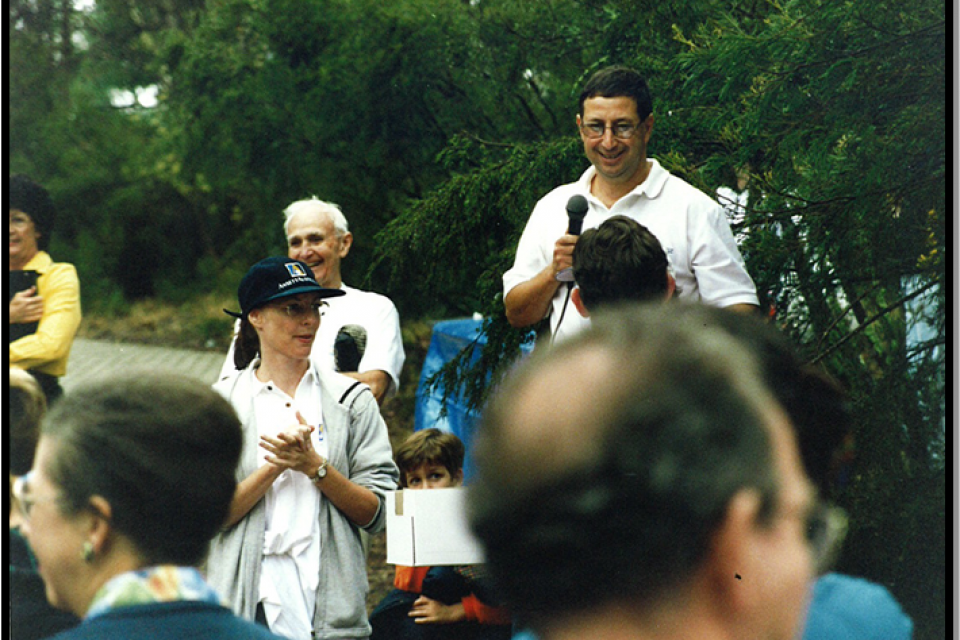
The Snedden Hall & Gallop Downtowner was a free bus service travelling around Canberra city in the early 1990s. Photo: Supplied.
Sixty years ago, Canberra was a very different place to the modern thriving city it is today. Just 50,000 people lived in the nation’s capital, Lake Burley Griffin was still an idea, and the town centres of Woden Valley, Belconnen and Tuggeranong were yet to be planned.
In a city full of promise, one of Canberra’s long-standing law firms opened its doors in 1960 with just two young lawyers, Norm Snedden and Allan Hall. They were among only 23 solicitors in private practice in the ACT at that time. Norm and Allan were joined by John Gallop in 1962, and the new law firm became known as Snedden Hall & Gallop.
Allan, the now well-retired founding partner, originally came to Canberra from Sydney.
“I was employed in the Deputy Commonwealth Crown Solicitor’s Office in Sydney and was also a part-time student at Sydney University, from which I graduated with a Bachelor of Laws degree in early 1954,” he says. “Near the end of 1957, I was promoted to the position of legal officer grade three in the Crown Solicitor’s head office in Canberra.
“At that stage, I saw my future as being in the Attorney-General’s Department and had embarked on a Master’s degree thesis on a constitutional law topic. However, in 1960, Norm Snedden, who had begun a legal practice in Canberra in March of that year, asked me to join him, and with some trepidation, I retired from my tenured position in the public service.”

Founding partner Justice John Gallop went on to become one of the longest-serving judges on the ACT Supreme Court and the Federal Court of Australia. He is pictured here at his retirement ceremony in 2000. Photo: Supplied.
Allan says there was not even dedicated law courts in the ACT when the firm opened.
“The Supreme Court used to sit in the Patents Office Building in Barton, an inconvenient location and barely adequate courtroom,” he says. “The Court of Petty Sessions was in the original Jolimont Building on Northbourne Avenue, in Civic. This was an old timber building – long since demolished – that also housed the Canberra Police Station.”
Prime Minister Robert Menzies unveiled the Law Courts Building in Knowles Place in 1963, followed by the opening of the new ACT Supreme Court building. Snedden Hall & Gallop was among the first firms to represent clients in the new courtrooms.
With many government departments relocating to Canberra from Melbourne in the 1960s, the ACT grew rapidly, and so did the demand for legal services. By the end of the decade, Snedden Hall & Gallop was a broad practice, including business law, property transactions and all types of litigation.
Current managing director Richard Faulks says many of the ACT region’s most prominent legal practitioners developed their careers at the firm.
“During the years, some of our lawyers have gone on to hold the presidencies of the ACT Law Society and the ACT Bar Association, and have become barristers, lecturers, commissioners and judges,” he says.
Snedden Hall & Gallop remained a partnership until 2007 when it became incorporated and Richard, who was managing partner, became managing director of the firm. Reflecting on changes in law during the years, he says possibly the most significant changes have been driven by technology.
“Pre-computers, every document was typed individually on a manual typewriter and then stored in hard copy,” says Richard. “With such a big administrative load, every lawyer had two or sometimes three personal assistants. These days, young lawyers look after all their own documents.”
He says it is pleasing to see more women lawyers, with more women moving into higher positions in the judiciary.

The Snedden Hall & Gallop team in 2020. Photo: Region Media.
One thing he says he misses from the past is the camaraderie among Canberra lawyers.
“As much of our work has moved online, and the world has changed, we don’t socialise as much any more,” says Richard. “There is a lot less personal contact in the profession.”
During it’s 60 year history, Richard says he is pleased that Snedden Hall & Gallop has retained its status as an independent firm, now with four directors and 30 staff.
“I am pleased to say our firm has lost none of its spirit of friendship and loyalty,” he says. “We do try to enjoy our work, and work hard for our clients and each other.”
Returning to the beginning of the Snedden Hall & Gallop story, when asked why he wanted to become a lawyer, Allan says: “The shortest answer is that when I sat for the Intermediate Certificate in NSW, in 1945, the Shakespearean play set for the English exam was The Merchant of Venice. I became fascinated by Portia’s defence of Antonio and decided I would like to become a lawyer, if possible. How the ‘if possible’ became a reality is a much longer story.”
For more information, visit Snedden Hall & Gallop.



























